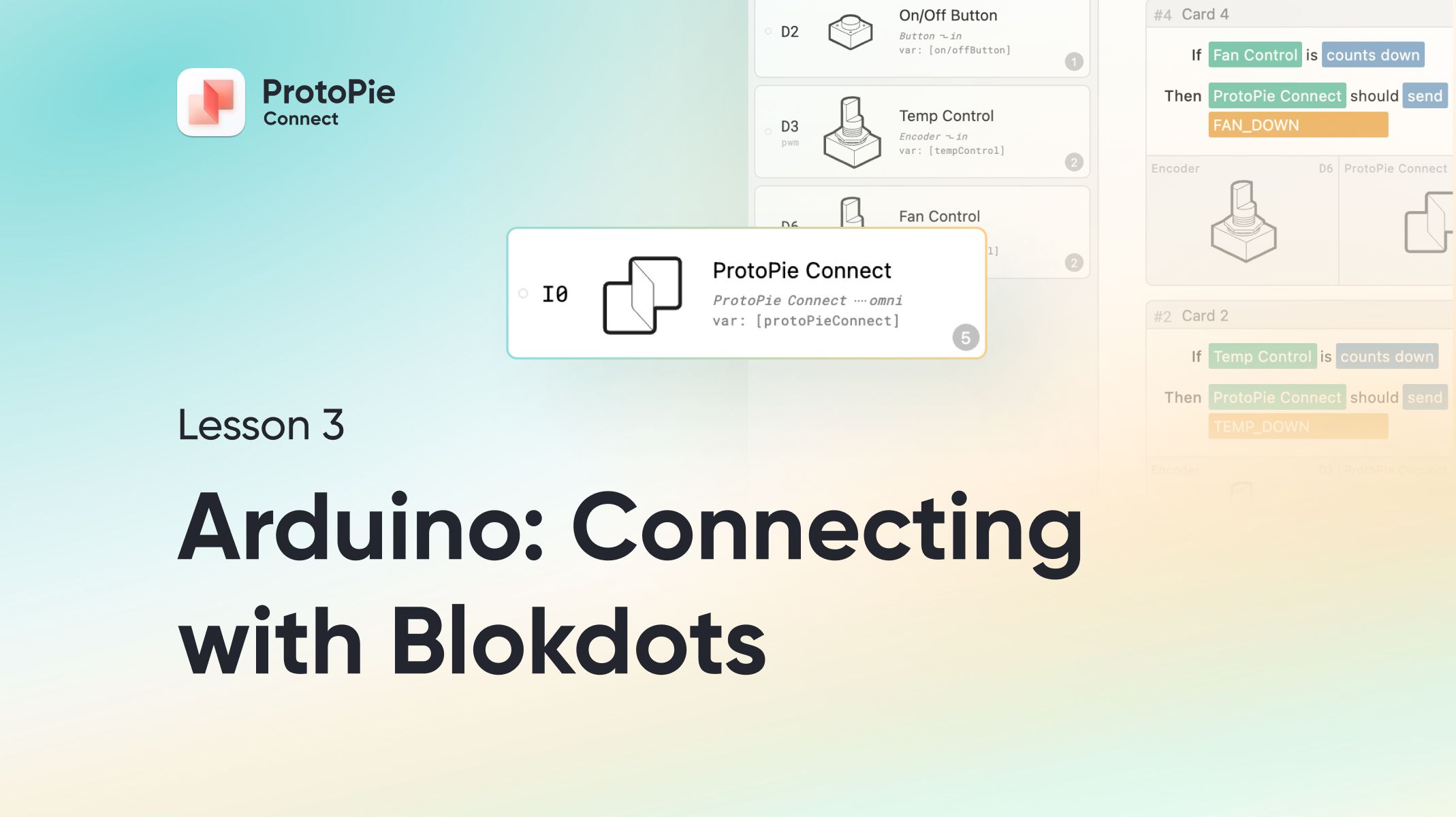Meta Case Study on Robotics Prototyping
Explore how ProtoPie shapes the user experience of Meta's robotics systems.


In the rapidly advancing field of robotics, combining state-of-the-art technology with user-centered design is essential. When it comes to creating effective robots, high-fidelity prototyping is also crucial as it allows designers to test and refine their designs in a real-world context, ensuring that the final product meets the users’ needs.
During the Robotics UX Prototyping at Meta webinar, Ryan Olson, a product design engineer in Meta's Infrastructure Data Center Robotics team, shed light on how ProtoPie significantly shapes the user experience of Meta's robotics systems.
This article will discuss the challenges, methodologies, and real-world applications related to robotics UX prototyping at Meta. To revisit the helpful insights shared by Ryan, you can watch the webinar recording linked below.
Overview
- Data Center Robotics: challenges and the need for automation
- The significance of prototyping in Meta's Robotics team
- Why ProtoPie stands out in Meta's workflow
- Real-world applications: Meta's robotics prototyping process
- Prototyping tips from Meta's Robotics team
Data Center Robotics: challenges and the need for automation
Meta's Infrastructure Data Center group faces unique challenges in designing for internal users who need specialized training for the tools they operate. Unlike consumer-focused designs, where instant comprehension is crucial, Meta focuses on developing entire systems, considering the user's journey from approaching the tool to completing their goal.
Automation plays a crucial role in achieving this goal. It allows data center operators to work more efficiently and safely by providing them with the necessary tools to handle big tasks. It also frees them from tedious or dangerous work, enabling them to focus on more critical aspects of their job.
In essence, UI prototyping for robotics at Meta revolves around the following:
- Designing for internal users with specialized training;
- Prototyping complete systems, not just individual interactions;
- Emphasizing hardware interoperability and simulating intricate robotic systems;

The significance of prototyping in Meta's Robotics team
At Meta, they follow a fascinating approach to design - they simultaneously create and refine the user interface and hardware prototypes. This practice helps in seamlessly integrating these two critical components, resulting in a cohesive and user-friendly product. Ryan emphasizes the importance of designing the machine behaviors, signals, and controls in tandem with the on-screen elements. This approach ensures that the digital and physical worlds blend seamlessly, making the transition between the two a breeze.
Prototyping plays a pivotal role in Meta's design process for several reasons.
- Prototyping allows for quick iterations, surpassing the speed of traditional engineering development for every concept.
- The interactive nature of prototypes enhances user feedback, offering stakeholders and potential users a more tangible understanding than static design screens.
- Prototyping enhances comprehension for stakeholders and potential users, offering a more tangible and interactive experience than static screens.
- Prototyping facilitates the validation of potential use cases before committing to full-scale development.
- Simultaneous prototyping of UI and hardware designs fosters mutual influence, ensuring a harmonized and integrated final product.
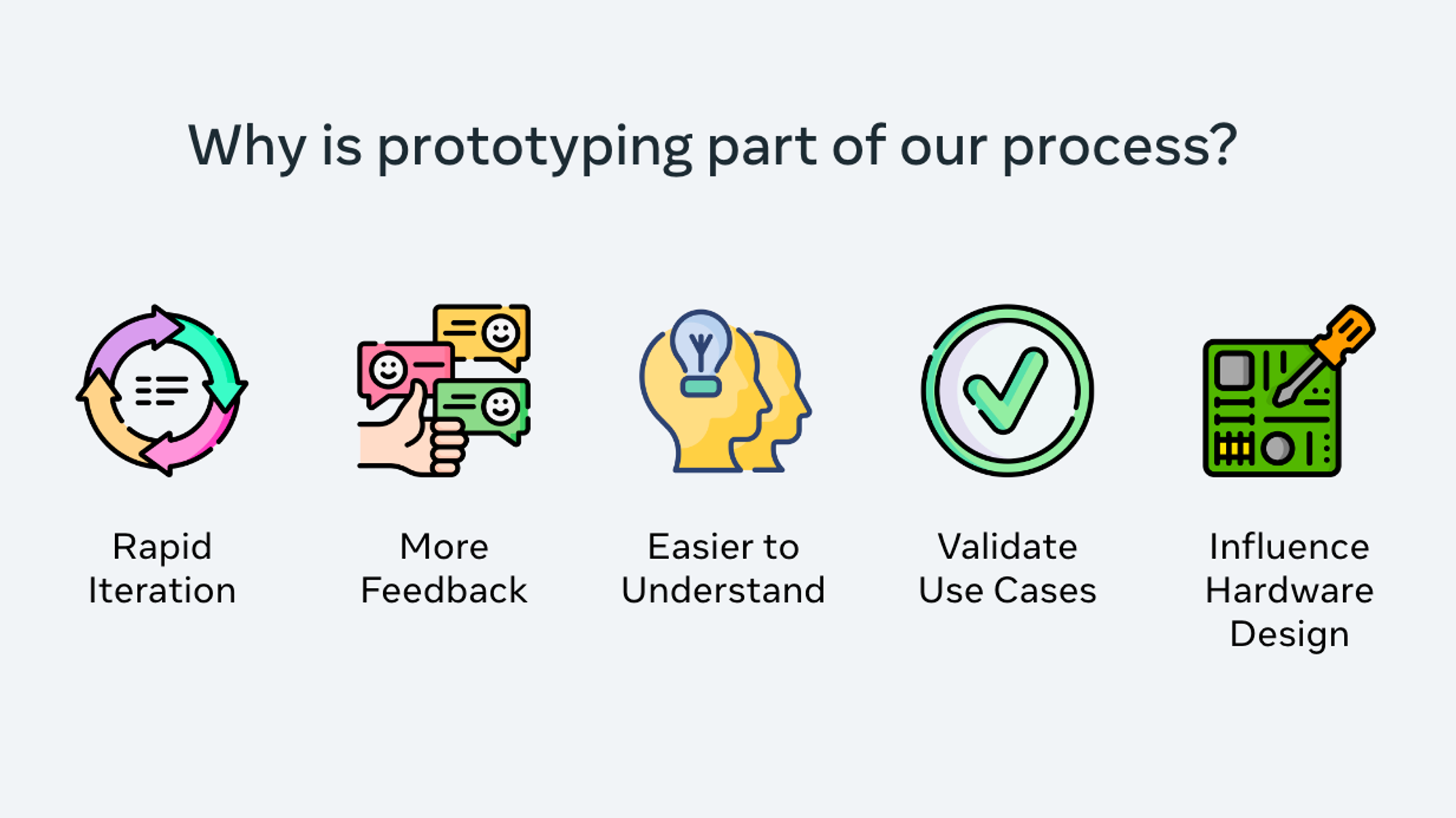
Why ProtoPie stands out in Meta's workflow
Ryan highlights why Meta's Robotics team prefers ProtoPie for their prototyping needs.
ProtoPie's programmability and state maintenance during complex flows provide a level of flexibility that surpasses other tools. The tool's ability to expose programming concepts like variable scope, objects, conditionals, and events while remaining accessible to non-programmers contributes to its effectiveness.
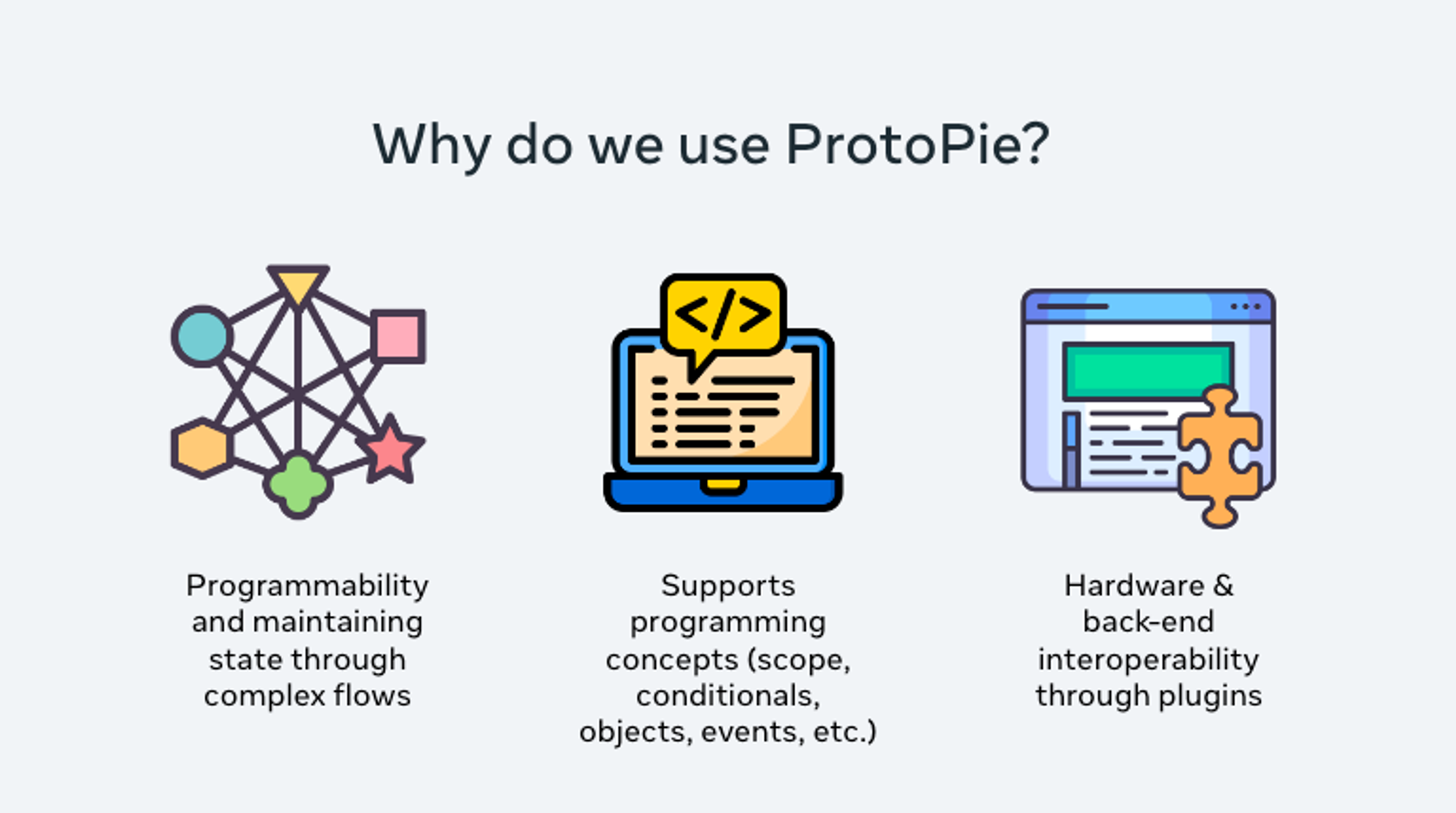
The integration of ProtoPie with Arduino, facilitated through a dedicated plugin, serves as a crucial bridge for hardware and backend interoperability. This allows the team to control physical components such as motors, LEDs, and sensors from ProtoPie, establishing a seamless connection between the digital prototype and the physical hardware.
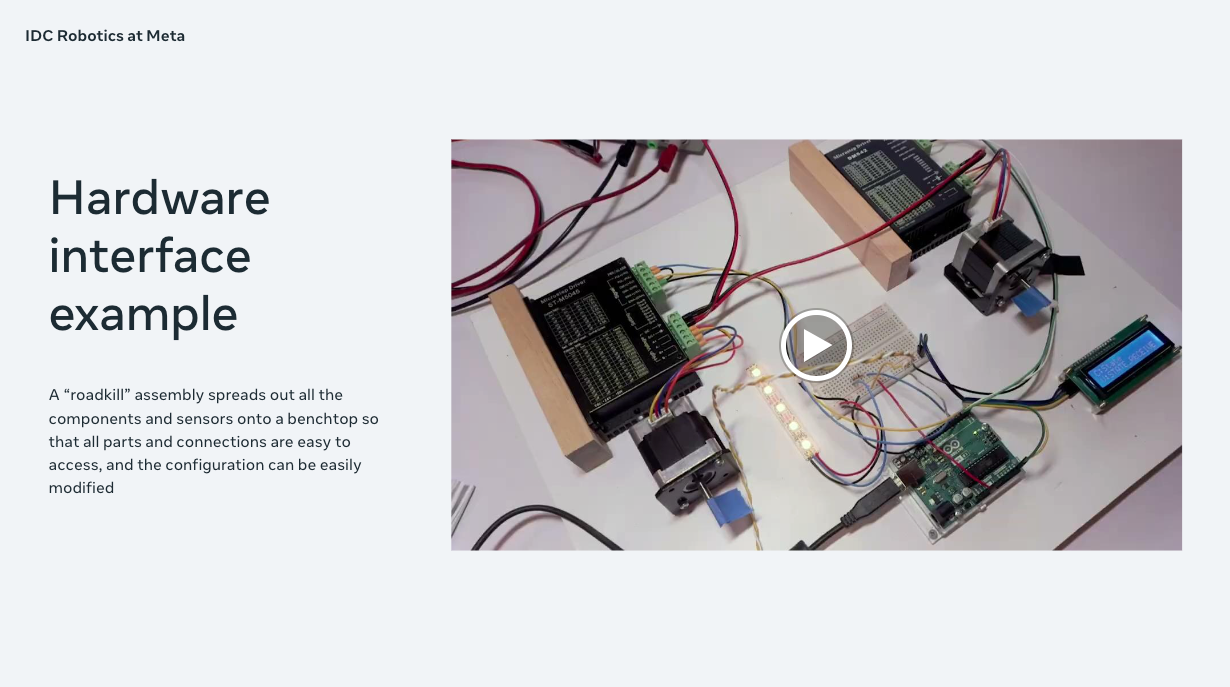
Real-world applications: Meta's robotics prototyping process
To illustrate the practical application of ProtoPie in Meta's robotics projects, Ryan delves into a fictional example of a robot restaurant.
This imaginary scenario involves various UI prototypes, including customer UI, management UI, remote control UI, and human-robot interaction (HRI) UI. Each of these interfaces presents distinct challenges and requires specific prototyping approaches, which we will dive into below.
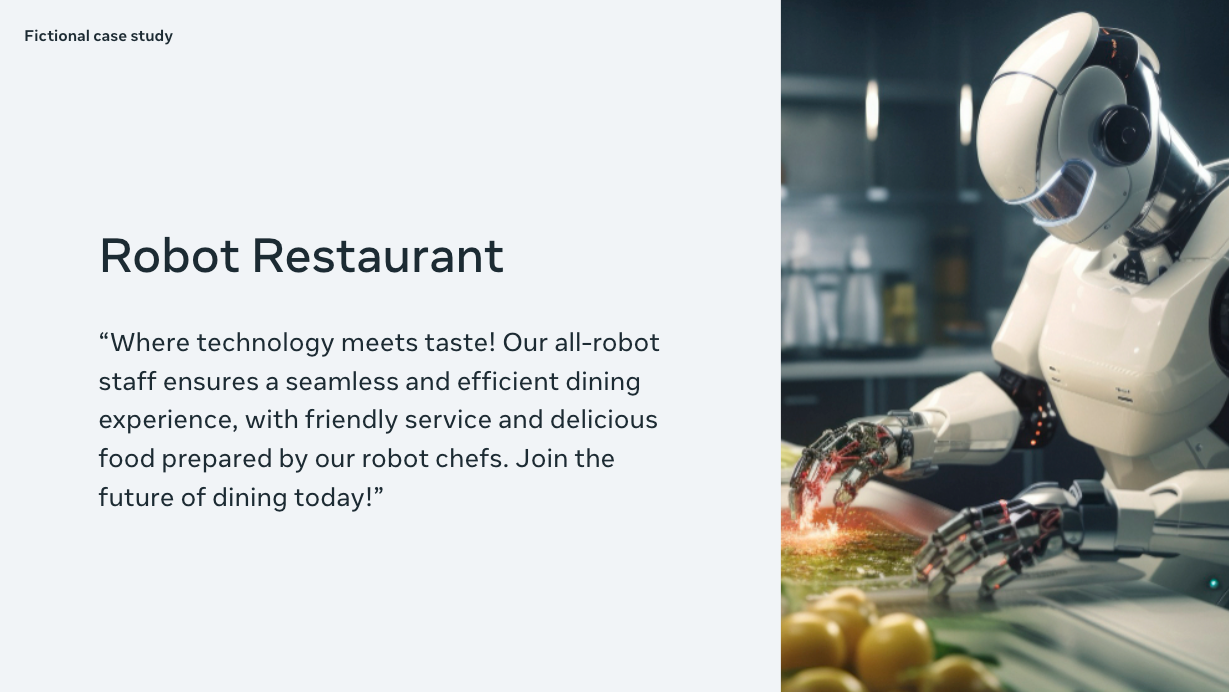
Customer UI prototype
Simplicity is key in the customer UI prototype, designed for tablets at restaurant tables. Ryan explains that this prototype could be standalone for basic browsing and ordering interactions or connected to a backend service to simulate a more comprehensive system.
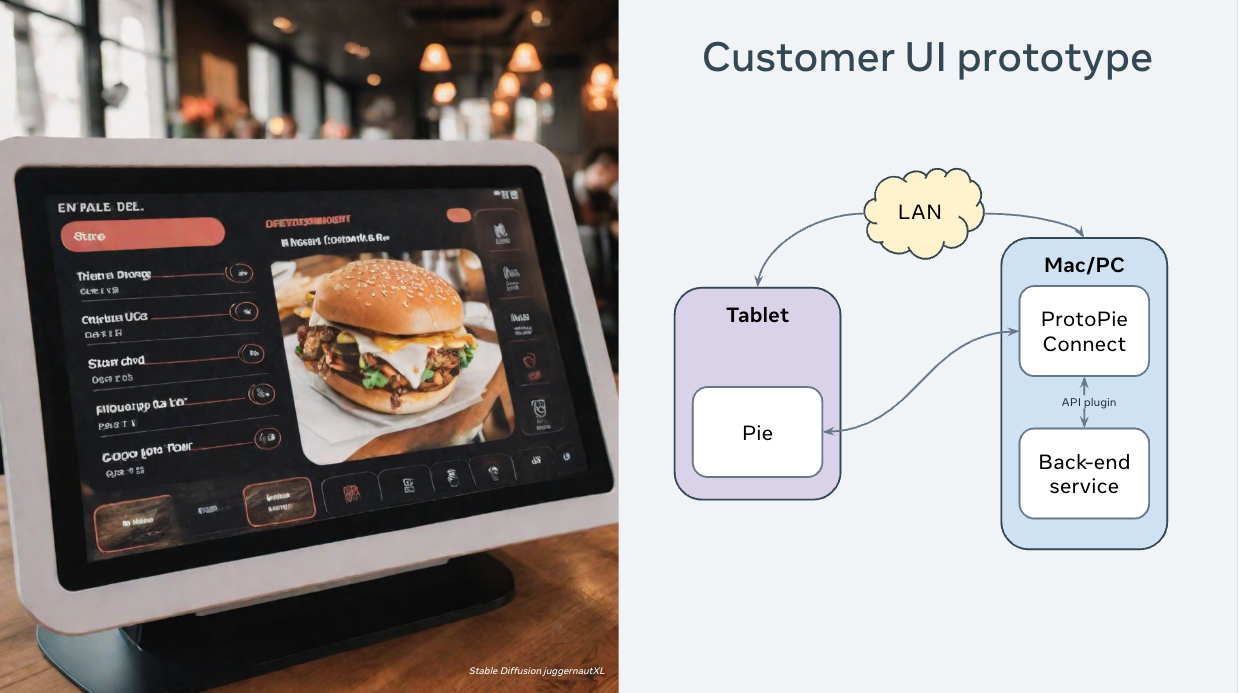
Management UI prototype
In the management UI, where overseeing the entire restaurant's robot staff is crucial, the prototype would likely connect to a backend service and involve interactions with individual robots.
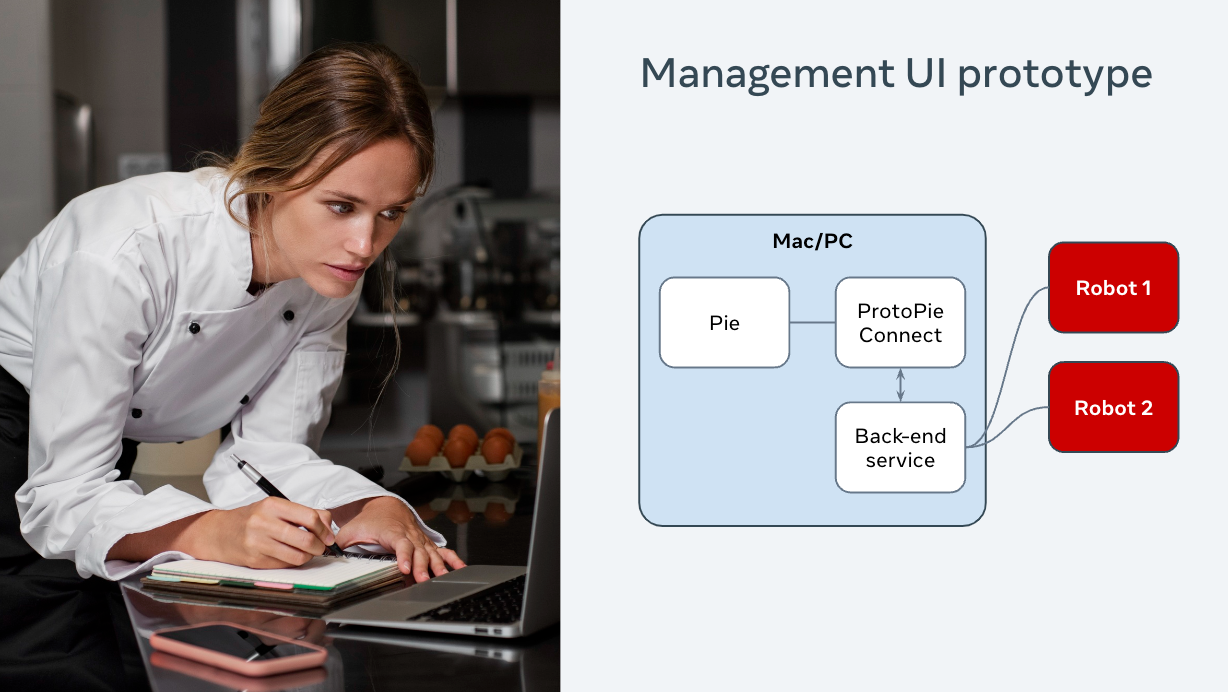
Remote control UI prototype
For the remote control UI, akin to this ProtoPie robot arm demo, the challenge lies in real-time, detailed control of individual robots. This requires a layer between ProtoPie and the physical robot hardware, such as an Arduino acting as a conductor to interpret higher-level instructions.

Human-Robot Interaction prototype
In the HRI prototype, where robots autonomously interact with humans, the robots' personalities come into play. Ryan emphasized that while Meta doesn't create lifelike robots, even simple robots on wheels can exhibit a form of personality through behaviors like acknowledging a person or adjusting their speed when approaching.
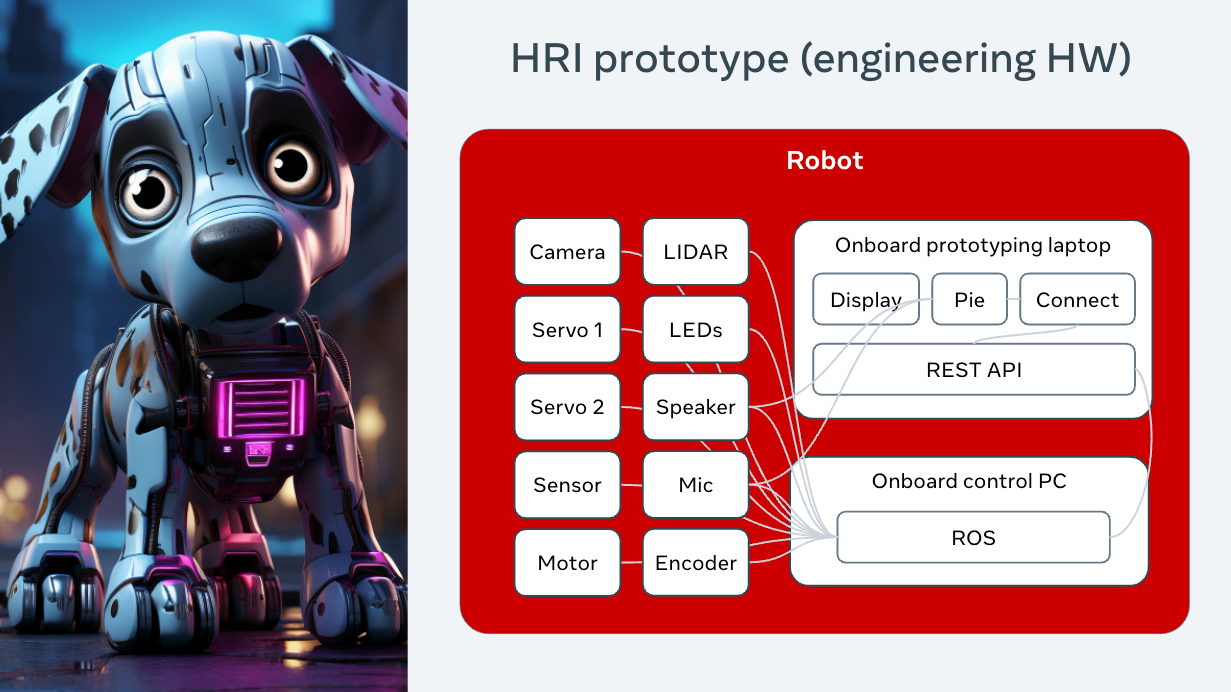
The main idea is that the ProtoPie prototype (Pie) has a defined role as the UI prototype in the robotics development process. Its purpose is not to get involved in the engineering details but to communicate with the rest of the system through well-defined conduits. This clear separation allows for a more focused and efficient development process.
The benefit of this approach is that the UI prototype doesn't need an in-depth understanding of the engineering intricacies. It interacts with a conduit that connects to the system, simplifying the design process. Additionally, this approach sets the stage for a smoother transition to building the production UI, which may use the same or similar conduits developed during the prototyping phase.
Prototyping tips from Meta's Robotics team
To conclude the webinar presentation, Ryan shares some valuable prototyping tips gathered from Meta's Robotics team's experience. These tips include:
- Start with wireframes to get the functionality working before diving into visual design.
- Use a "roadkill" or autopsy table to test early hardware interactions, allowing easier access to wires and components.
- Document triggers and responses with meaningful names in ProtoPie, using empty components for comments to enhance code clarity.
- Leverage group selection features to label and organize related triggers, enhancing the organization of complex prototypes.
- Utilize internal ID variables with unique overrides for repeated components, allowing instances to be easily distinguished.
These prototyping tips encapsulate Meta's pragmatic approach to navigating the complexities of robotics development, emphasizing efficiency, organization, and clarity in prototyping.
How ProtoPie shapes the future of robotics UX prototyping
As Meta continues to push the boundaries of UX prototyping within the dynamic realm of robotics, ProtoPie stands as a trusted companion, offering programmability, flexibility, and seamless integration with hardware components.
Join over 15,000 companies, including Meta, and start your prototyping journey today by trying ProtoPie for free.
.jpg)
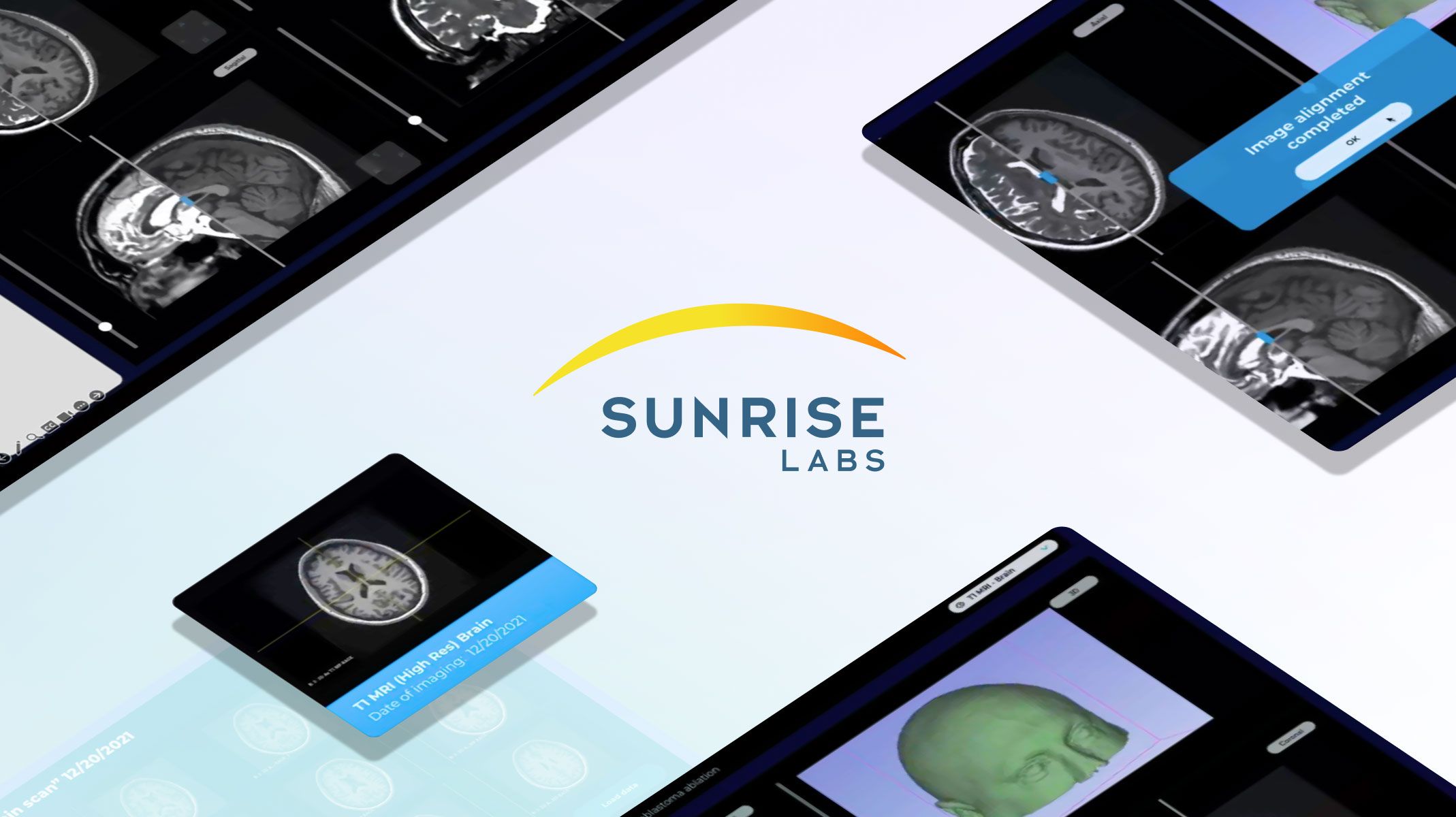.jpg)
